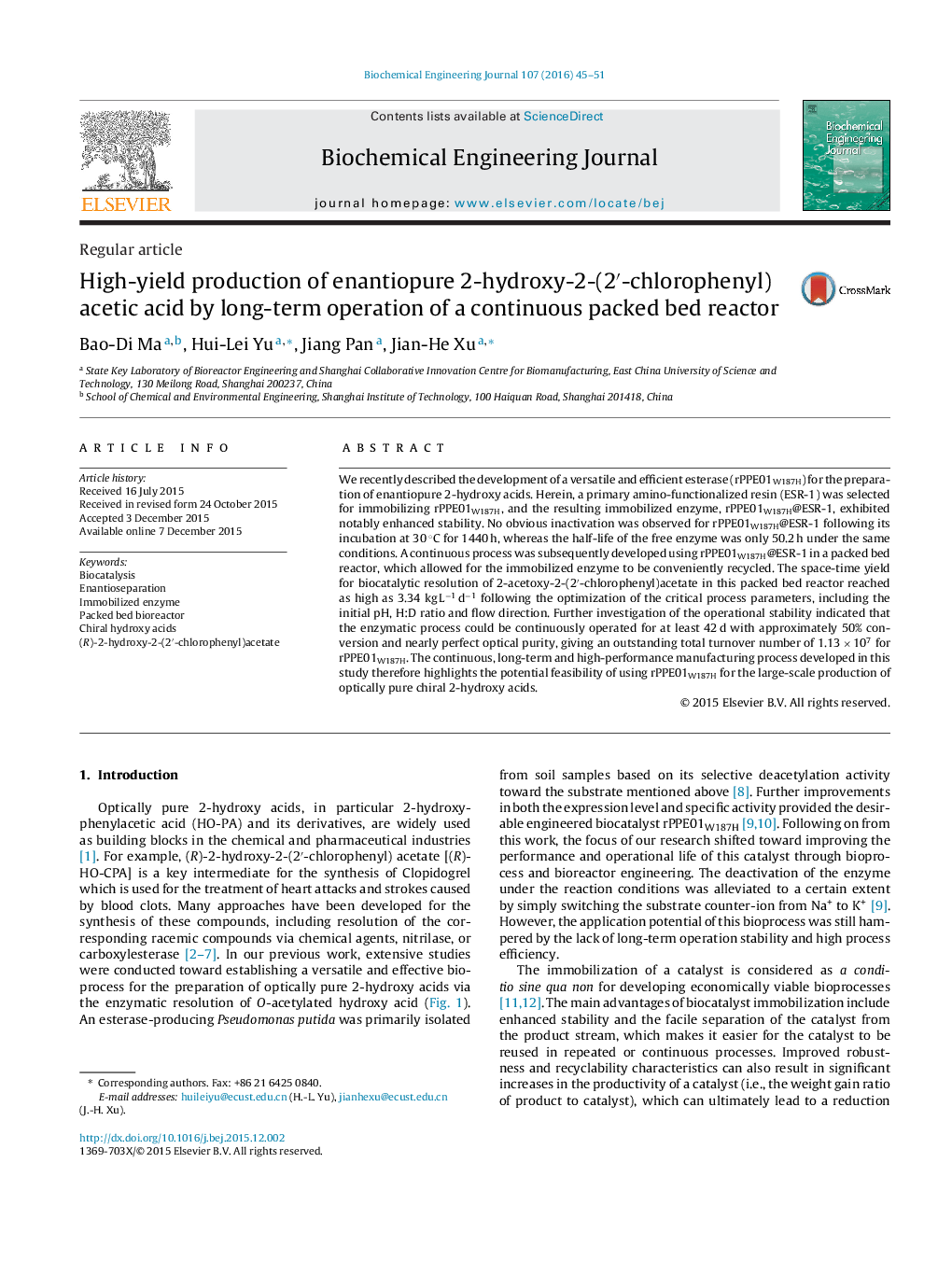| Article ID | Journal | Published Year | Pages | File Type |
|---|---|---|---|---|
| 2774 | Biochemical Engineering Journal | 2016 | 7 Pages |
•Stability and reusability of an esterase were remarkably enhanced by immobilization.•A continuous packed bed reactor was constructed using the immobilized esterase.•(R)-2-hydroxy-2-(2′-chlorophenyl) acetate was efficiently prepared in the reactor.•The continuous process was stably operated for 42 d with STY of 3.34 kg L−1 d−1.
We recently described the development of a versatile and efficient esterase (rPPE01W187H) for the preparation of enantiopure 2-hydroxy acids. Herein, a primary amino-functionalized resin (ESR-1) was selected for immobilizing rPPE01W187H, and the resulting immobilized enzyme, rPPE01W187H@ESR-1, exhibited notably enhanced stability. No obvious inactivation was observed for rPPE01W187H@ESR-1 following its incubation at 30 °C for 1440 h, whereas the half-life of the free enzyme was only 50.2 h under the same conditions. A continuous process was subsequently developed using rPPE01W187H@ESR-1 in a packed bed reactor, which allowed for the immobilized enzyme to be conveniently recycled. The space-time yield for biocatalytic resolution of 2-acetoxy-2-(2′-chlorophenyl)acetate in this packed bed reactor reached as high as 3.34 kg L−1 d−1 following the optimization of the critical process parameters, including the initial pH, H:D ratio and flow direction. Further investigation of the operational stability indicated that the enzymatic process could be continuously operated for at least 42 d with approximately 50% conversion and nearly perfect optical purity, giving an outstanding total turnover number of 1.13 × 107 for rPPE01W187H. The continuous, long-term and high-performance manufacturing process developed in this study therefore highlights the potential feasibility of using rPPE01W187H for the large-scale production of optically pure chiral 2-hydroxy acids.
Graphical abstractFigure optionsDownload full-size imageDownload as PowerPoint slide
